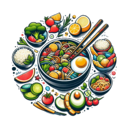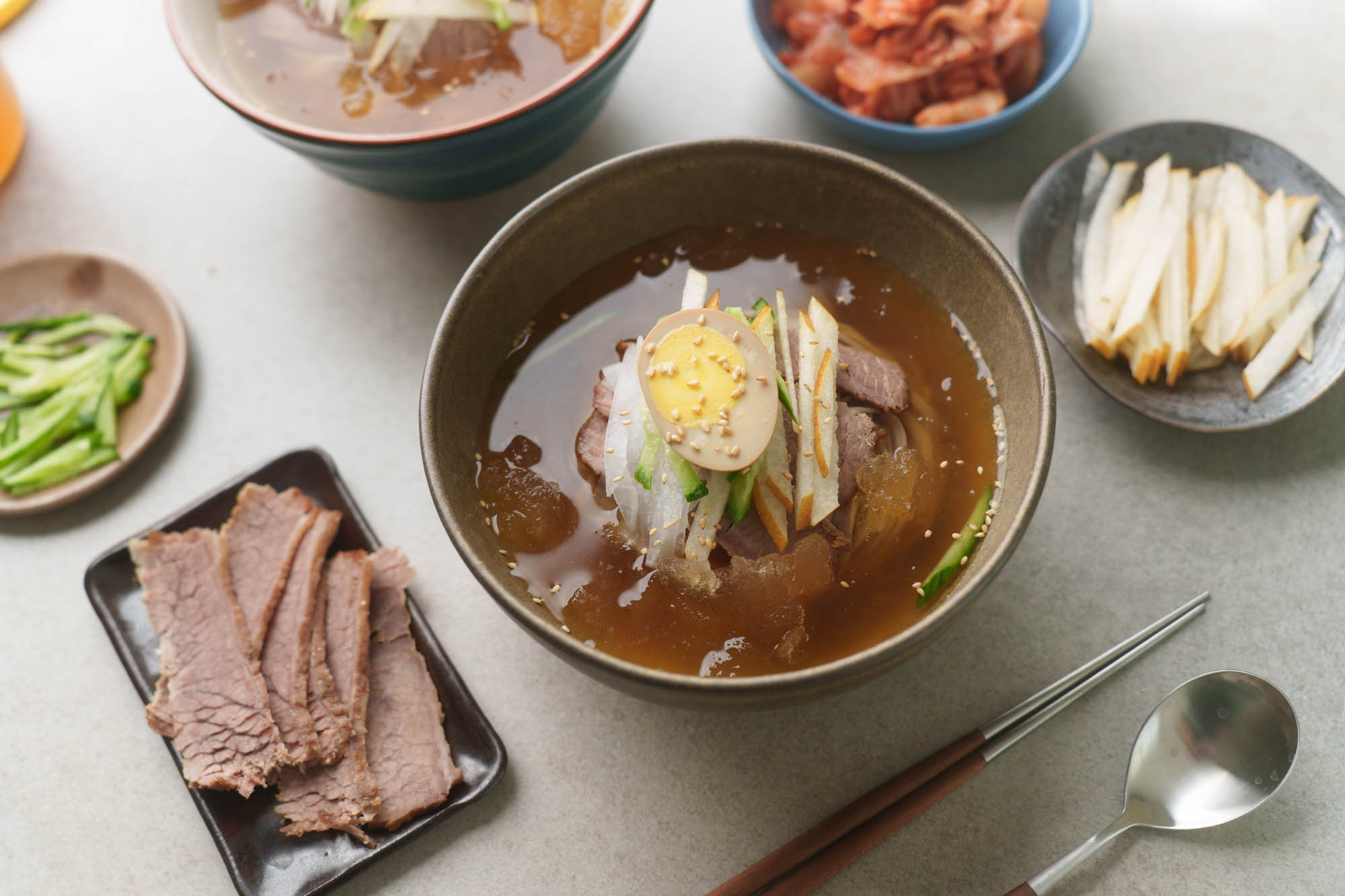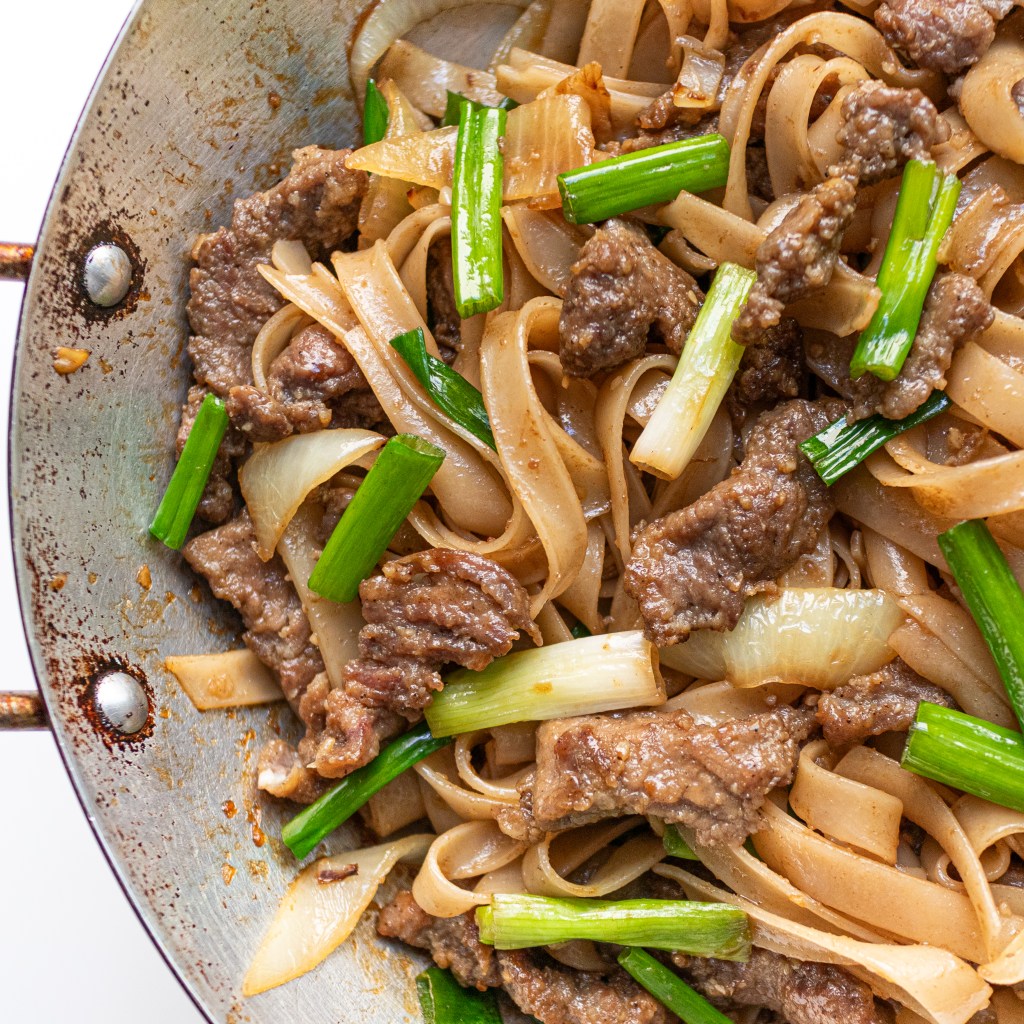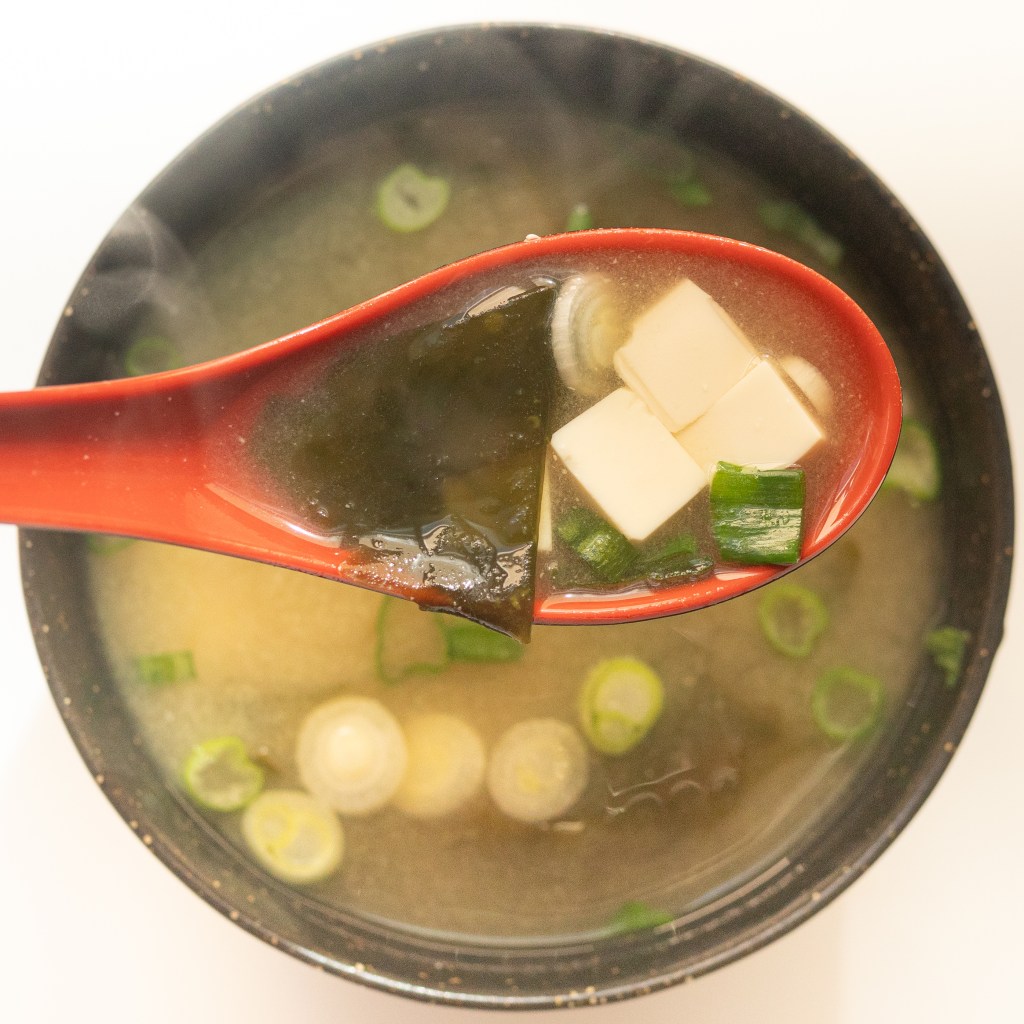Chilled noodles in a light and savory broth make for a refreshing meal on hot days. Korean cold noodles are my go-to during summer, as each bite bursts with crunchy cucumber, sweet Korean pear, pickled radish, chewy noodles, and tender beef brisket. From pre-made radish kimchi to selecting the best noodles at the grocery store, let me guide you through making this delightful dish at home.
Types of Naengmyeon / Korean Cold Noodles
Korean cold noodles, known as naengmyeon, are a chilled and refreshing soup ideal for warm summer days. Originating from North Korea, there are various types, including mul naengmyeon and bibim naengmyeon.

Mul naengmyeon features a cold soup base made from beef broth and dongchimi pickling liquid, combined with long, thin noodles and topped with tender beef, pickled radish, fresh cucumber, and sweet Korean pears. The term “mul naengmyeon” translates to “water cold noodles.”
Bibim naengmyeon is served dry with a spicy, vinegary gochujang-based dressing. While still enjoyed as a cold dish, it features buckwheat noodles topped with fresh cucumber slices, Korean pears, and roasted sesame seeds.
On hot days, we often indulge in mul naengmyeon at our favorite local Korean restaurants, such as Mo Ran Gak and Yigah. We also keep our fridge stocked with pre-made Korean cold noodle packets from our local H-Mart for those moments of hunger. These convenient packets include fresh noodles, seasoned broth, and mustard.
Ingredients for the Brisket Broth
Korean cold noodles are crafted from beef broth and dongchimi broth (also known as water radish kimchi). Let’s begin with the brisket broth.

Since Korean cold noodles can be made with various recipes and ingredients, we prefer to prepare the beef broth a day in advance. This allows us to chill the broth overnight in the fridge, season it the next day with dongchimi broth, and then place it in the freezer an hour before serving.
The beef broth is created by simmering brisket in a pot with aromatics for several hours until the meat becomes soft and tender. We enjoy making brisket broth at home to customize our soup, as we would need to buy meat regardless if we used pre-made broth. Here are the ingredients we add to the pot:
- Beef brisket is the ideal cut for this dish, as the stewing process tenderizes the meat while producing a rich broth. This cut is relatively lean and free of gristle and bones, keeping the dish simple.
- Korean beef stock powder enhances the flavor and adds a bit of salt to the broth. We use the CJ Sogogi Dashida variety, but other beef bouillon brands like Better than Bouillon beef powder can also work. If using a different brand, start with half the amount of powder and taste before adding more to avoid oversalting.
- Korean radish contributes a subtle sweetness and peppery flavor to the broth.
- Fresh aromatics such as garlic, ginger, white onion, and the white part of scallions deepen the broth’s flavor.
- Whole black peppercorns add a hint of peppery flavor.
Seasoning the Brisket Broth

The other key component added to the brisket broth is the dongchimi broth. For convenience, you can purchase premade dongchimi from your local Korean grocery store, such as H-Mart. We typically buy the Chin Jung Food water radish kimchi variety. When ready to prepare your Korean cold noodle soup, combine the beef broth with the dongchimi broth.
For added flavor, season the soup with Korean soy sauce and granulated sugar. It’s best to use Korean soy sauce, like the Chosun Ganjang brand, which is specifically designed for soup. It has a lighter flavor and is naturally brewed. Keep in mind that the broth’s flavor may vary depending on how long the kimchi has fermented, so taste as you go.

Based on this recipe’s beef broth and our premade dongchimi liquid, we recommend the following ratios for our Korean cold noodles:
- Broth ratio: 1 part dongchimi liquid to 2 parts beef broth
- Seasoning ratio: 1 part sugar to 6 parts Korean soup soy sauce
Here are some tips for seasoning your soup:
- Taste the dongchimi to assess its sweetness, tanginess, and fermentation level.
- Start with a balanced ratio of beef broth and dongchimi liquid, adjusting with seasoning ingredients, beef broth, or liquid as needed.
- If you prefer a tangier flavor, add more dongchimi liquid.
- For a richer, savory flavor, incorporate more beef broth and soy sauce.
- To balance the pickled, tangy taste of the dongchimi liquid, add more sugar.
- Remember that once the soup broth is chilled and semi-frozen, the flavor will slightly dilute, so adjust seasoning accordingly. You can also modify the seasoning while eating.
Slightly Frozen Broth

After seasoning your Korean cold noodle soup base, place it in the freezer for about 45 minutes to 1 hour before serving. This will give you a slushy and cold consistency for these extra-chilled noodles.
Types of Noodles to Use

There are various types of noodles available for naengmyeon. Typically, Korean cold noodles are made from buckwheat and other ingredients like arrowroot or sweet potato starch. One popular variety is pyeongyang naengmyeon, which is made from buckwheat and features a soft texture with a brown hue.

For Korean cold noodles, we prefer using chik naengmyeon (made with arrowroot starch and kudzu) or Hamheung naengmyeon (made with potato starch) due to their chewier texture. Chik naengmyeon is also darker than both Pyeongyang and Hamheung naengmyeon.
When shopping, check the back of the ingredient list to identify which noodles contain these starches. Some may be labeled as buckwheat noodles on the front but also include potato starch or arrowroot starch, making them chewier than 100% buckwheat noodles.

Toppings to Add to Mul Naengmyeon

Korean cold noodles are served with a variety of toppings that are equally important:
- Tender brisket slices from the stewed beef broth serve as the main protein in the soup. They are chilled and cut into thin slices.
- Sliced pickled Korean radish provides a sweet and tangy flavor. You can use the pickled radish from the dongchimi or purchase premade pickled radish wraps from a Korean grocery store.
- Thinly sliced Korean pears add a refreshing sweetness to the soup.
- Fresh cucumbers contribute a crunchy texture. While you can add freshly cut batons, we prefer to thinly slice them and slightly pickle them with rice vinegar.
- Boiled eggs are a delightful addition, offering more protein. Smaller quail eggs, which are often marinated, are easy to eat in one bite. If unavailable, larger chicken eggs work well too.
- Roasted sesame seeds impart a nutty flavor to the soup.
To enhance the flavor further, consider adding Korean hot mustard, roasted sesame oil, or rice vinegar (or white vinegar). As is customary, Korean meals are enjoyed with an assortment of banchan, or side dishes, such as kimchi, kongnamul (cold seasoned bean sprouts), japchae (Korean glass noodles), or gamja salad (Korean potato salad).
According to the FDA, you can prepare the broth and stewed meats, which will last up to two days in the fridge. This recipe serves four, making it perfect for leftovers or a dinner gathering.
Tips for Korean Cold Noodle Success
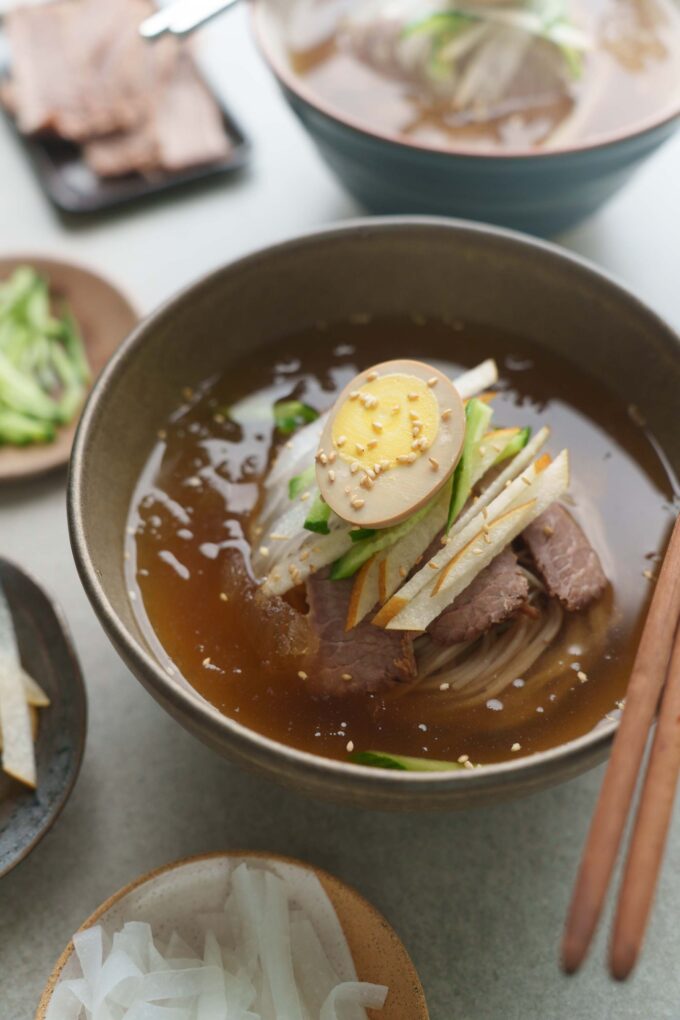
- To simplify the process, prepare the beef broth the day before. This allows you to chill the broth overnight in the fridge. The next day, place it in the freezer for an hour to achieve a slushy consistency.
- Taste as you season the soup base with beef broth and dongchimi liquid. The flavor of dongchimi liquid can vary based on fermentation, especially if you buy a premade jar. This may affect the overall broth, so use the guide above for proper seasoning.
- Cook the noodles just before serving. Regardless of the naengmyeon variety, they cook very quickly. To prevent clumping, make this your final step before assembling and serving the bowls.
- If you’re short on time or prefer not to make broth, you can purchase premade packets from the refrigerated section that include fresh noodles, broth, and mustard. There are also dry packets with dry noodles and powdered seasoning that require water.
- Don’t forget to buy or prepare toppings, add-on ingredients, and side dishes. For an easier recipe, consider purchasing premade pickled radish (or using the radish in the dongchimi), marinated eggs, and banchan.

